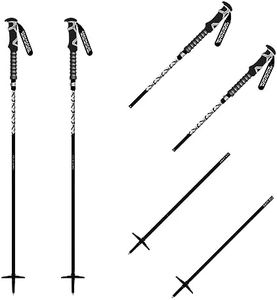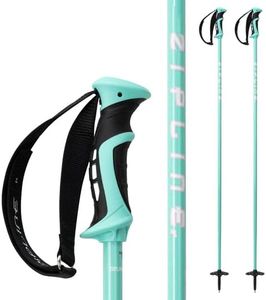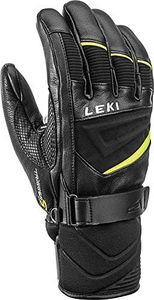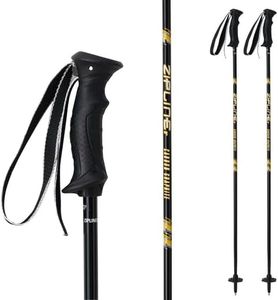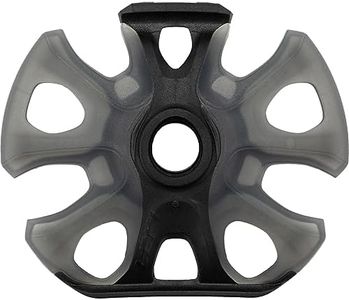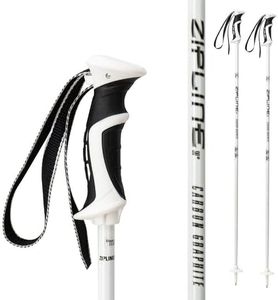We Use CookiesWe use cookies to enhance the security, performance,
functionality and for analytical and promotional activities. By continuing to browse this site you
are agreeing to our privacy policy
10 Best Ski Poles
From leading brands and best sellers available on the web.Buying Guide for the Best Ski Poles
Choosing the right ski poles can make your skiing experience more comfortable and enjoyable. The ideal poles help with stability, rhythm, and maneuverability as you ski, whether you're a beginner or have more advanced skills. When shopping for ski poles, it's important to look at a few key features to ensure they suit your height, skill level, and the type of skiing you plan to do. Understanding what makes each feature important will help you pick ski poles that fit your needs and improve your time on the slopes.LengthLength refers to how tall the ski pole is from tip to grip. This is one of the most important factors since the right length ensures proper posture, balance, and effective pole planting while skiing. Poles that are too long or too short can throw off your balance and technique. Normally, if you turn a pole upside down with your hand under the basket, your arm should form a 90-degree angle. Shorter poles are useful for freestyle or terrain park skiing where mobility matters, while longer poles are preferred for cross-country and backcountry skiing to provide better leverage. The right length for you largely depends on your height and skiing style, so figure out where and how you'll be using your poles before making your choice.
MaterialSki pole material affects the weight, durability, and flexibility of the pole. Common materials include aluminum, carbon fiber, and composite blends. Aluminum poles are durable and affordable, making them a reliable choice for beginners and regular resort skiers. Carbon fiber poles are lighter and can absorb vibrations better, which is great for more experienced skiers or those who want less fatigue during long days but can be pricier and less durable in hard falls. Composites blend materials for a balance between cost, weight, and strength. When picking, think about how much wear and tear your poles are likely to face, how much you value lightness, and how seriously you take your skiing.
GripThe grip is the part of the ski pole you hold, and its comfort and shape can impact your overall experience. Grips come in different shapes and materials such as rubber, foam, or cork. Rubber grips are durable and have good insulation, foam grips are lightweight and comfortable for cold conditions, and cork grips provide both comfort and warmth but are usually found on higher-end poles. Someone with larger or smaller hands may prefer a different grip size or shape. If you often ski in gloves or mittens, make sure the grip feels comfortable and secure while wearing them.
StrapStraps keep the ski poles secured to your wrists so you don’t drop them while skiing. They come in various styles ranging from simple adjustable webbing to ergonomic padded designs. A well-designed strap can reduce wrist fatigue and make it easier to control the pole, while a poorly fitted strap may be uncomfortable or even risky if you fall. Some advanced models feature quick-release straps for extra safety, which might interest those skiing in challenging or off-piste environments. Think about how easily you can get your hand in and out of the strap and how comfortable it feels over your glove.
BasketThe basket is the disk near the tip of the pole that prevents it from sinking too deeply into the snow. Baskets come in different sizes and shapes: small baskets are good for hard-packed snow or groomed slopes, while larger baskets are better for powder or deeper snow as they provide more flotation. If you switch between different types of terrain, look for poles with interchangeable baskets. Choose a basket size based on the snow conditions and terrain you’re most likely to ski in.
TipThe tip is the end of the ski pole that makes contact with the snow. Most tips are made from steel or carbide for durability and traction. Sharper or more pointed tips provide better grip on icy surfaces, which is helpful for all-mountain or backcountry skiing. If you’re only skiing on groomed runs, almost any standard tip will work, but if you plan to explore more varied terrain, sharpness and durability become more important. Match your ski pole tip to the type of skiing you expect to do most often.

